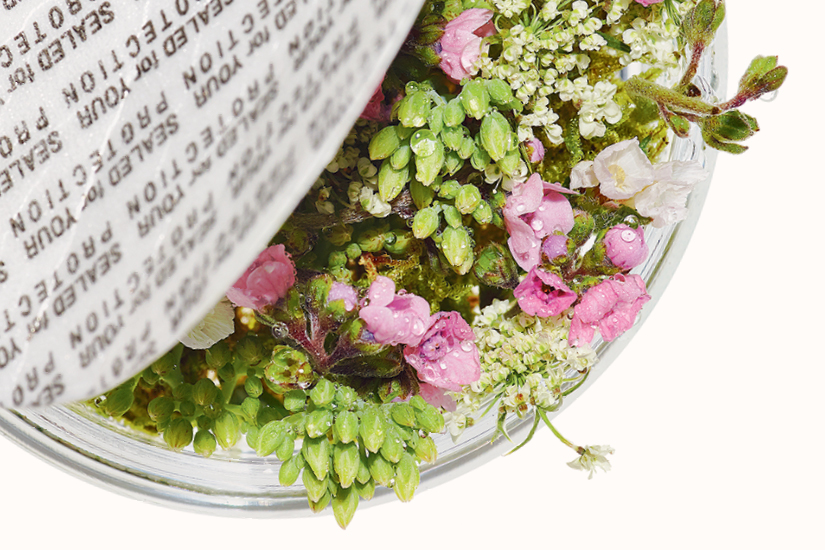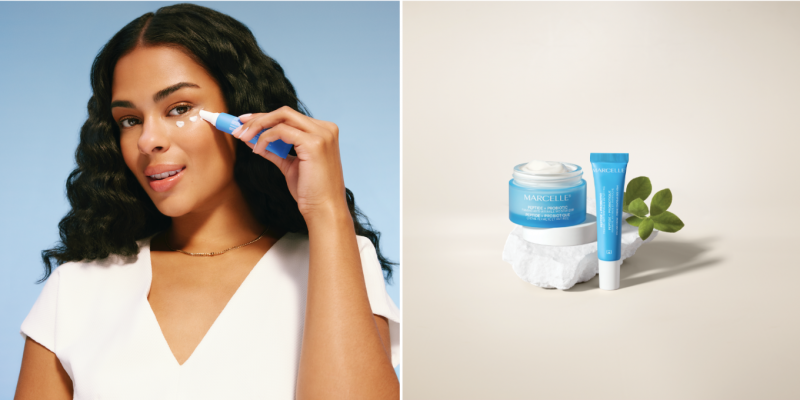Skincare
The case for using fresh skincare
The latest crop of skincare products taking their cues from the produce aisle—the fresher the better.
by : Victoria DiPlacido- Sep 25th, 2017

There’s something to be said for the ritualistic, and possibly stress-reducing, 30-second application of a silky luxury cream. But when it comes down to it, all I truly care about is that this lotion will banish my acne and that cream will do something about the crepey lines around my eyes that are no longer hidden by the Instagram dog filter. In the eternal quest for that perfectly efficacious product comes a new category: freshly mixed. New skincare formulations activate powerhouse ingredients at the last possible moment before use—and for a finite, clearly marked period of time—to ensure that products are at maximum efficacy every time you apply them.
“Fresh skincare makes sense the same way fresh food does; it’s much more beneficial for us—it’s more nutritious and has fewer additives,” says Jasmi Bonnén, founder of Nuori, a Danish skincare line that produces small batches of products every 12 weeks, all marked with “start by” and “finish by” dates. In 2009, Bonnén was working in the beauty industry when Europe changed cosmetics regulations to state that all products need to be labelled with an expiry date unless they are durable for more than two and a half years. “Not surprisingly, these 30 months very quickly became the industry standard for shelf life,” says Bonnén, who immediately began looking for information about the effect time has on cosmetics. “I was surprised to find numerous studies showing that commonly used active ingredients, such as vitamins, start losing their beneficial properties in a matter of months after blending due to oxidization [exposure to light or air]. I became convinced that there was a need for a fresh skincare alternative on the market.”
A post shared by NUORI (@nuoriskincare) on
In North America, Health Canada and the U.S. Food and Drug Administration (FDA) do not require beauty products to have a listed expiry date, but “producers are expected to be responsible for the safety of their products,” says Stephen Alain Ko, a Toronto-based cosmetics chemist and formulator. (The only outlier is sunscreen, which is regulated as a drug in Canada and needs to have an expiry date listed.) The symbol of an open jar enclosing a number indicating months is the “period after opening” label, a countdown for how long a product can be used safely—meaning no microbial growth, for instance—after the first time you use it. “The ‘period after using’ date doesn’t necessarily take the stability of active ingredients into account,” says Ko. “It’s a guidance for safety, not efficacy. It’s like an expiry date on milk is more about it going off than losing vitamins or nutritional value.”
Some ingredients, like retinol, antioxidants, enzymes and peptides, are more prone to timerelated breakdown than others. Vitamin C is particularly fickle. In the form of ascorbic acid, the vitamin has been shown to effectively penetrate skin, decrease pigmentation and fight free radicals that can cause DNA damage. But when met with oxygen, ascorbic acid oxidizes into semi-dehydroascorbic acid and then dehydroascorbic acid—neither of which have been shown to be as effective. This change can happen in as little as three days, depending on the formulation, says Ko. Clinique circumvents this issue in its Fresh Pressed Daily Booster by housing a powdered form of the vitamin in a sealed chamber that is activated only when broken by the user and mixed into an emulsion—after that, it’s good for seven days.
When Lancôme scientists were concocting the Advanced Génifique Sensitive, a new dual-purpose serum designed to firm and temper inflammation in sensitized skin, they zeroed in on ferulic acid for its ability to prevent cells from oxidizing. They knew “from the very beginning” that the formula would need to be mixed at home, says Sophie Bissuel, education director for Lancôme Canada. When placed in a solution—in this case, a trio of probiotics—and exposed to sunlight or heat, ferulic acid breaks down. Storing it in a separate vial and having it activated at home only when the product is about to be used allowed Lancôme “to guarantee optimal effectiveness for one month after activation,” says Bissuel.
Tata Harper Skincare, always made fresh on our farm in Vermont. #greenyourbeautyroutine
A post shared by Tata Harper Skincare (@tataharperskincare) on
Asking consumers to play the role of (admittedly beginner) chemist is the approach du jour for brands looking to ensure maximum efficacy—but it’s not the only way. Ingredients can be stabilized using encapsulation or chemical complexes that slow their inevitable breakdown. (Pairing vitamin C with vitamin E and ferulic acid, like in SkinCeuticals C E Ferulic, is one example.) Packaging, says Ko, is “likely the simplest way to extend the efficacy of an ingredient.” Airless pumps are ideal; jars—although beloved for their luxurious feel—are not. (There’s the possible introduction of bacteria from fingers and sticks used to scoop out product, and constantly removing the lid allows contact with air and UV light.) These concerns were top of mind for natural-skincare line Tata Harper when it was developing the formula for Crème Riche, the first moisturizer it has ever released in a jar format after repeated requests from clients. The preservation system, says Cara Bondi, vice president of research and development for the brand, needed to be “extremely robust” while still adhering to its “farm-to-face perspective.” The result was vegetal preservatives from castor beans and grape seed and a use-before date of six months. “If I’m making an oatmeal and honey face mask in my kitchen, I don’t put preservatives in it and I’m not going to keep that in my fridge for a year or two,” explains Bondi about the brand’s fresh-first mentality. “I’m going to make it, I’m going to use it and then I’m going to make more when I need it. That’s how we can guarantee that it’s the most effective.”
In terms of efficacy, Dr. Julia Carroll, a Toronto-based dermatologist, says that freshly mixed products aren’t universally superior to their shelf-stable counterparts—formulation, packaging and ingredients all come into play. Best practice: Re-evaluate your skincare arsenal every four months. “If you open a product and haven’t used it up after a season, the product may still be stable, but the question is: Is it still the right product for you?” says Carroll. For my part, I will acknowledge the role I play in coaxing the most out of my skincare and regularly apply each product I open until completion, no longer leaving it to languish under my sink until a pimple or a wrinkle reminds me of its existence. Use it or lose it, as they say.
This article originally appeared in the October 2017 issue of ELLE Canada.
Newsletter
Join our mailing list for the latest and biggest in fashion trends, beauty, culture and celebrity.
Read Next

Fashion
Are Fashion Brands Getting Greener?
While the fashion industry is making a lot of noise about being more sustainable, a closer look shows that its earth-friendly commitments are often more illusion than reality.
by : Marouchka Franjulien- Apr 19th, 2024

Beauty
What Beauty Packaging Is Actually Sustainable?
We sought out leaders in the field to help us get to the bottom of the blue bin once and for all.
by : Victoria Christie- Apr 19th, 2024

Beauty
Tested and Approved: A Skin Saviour That Works While You Sleep
Wake up with your glowiest skin yet—even if you didn’t clock eight hours.
by : ELLE Canada- Apr 11th, 2024




